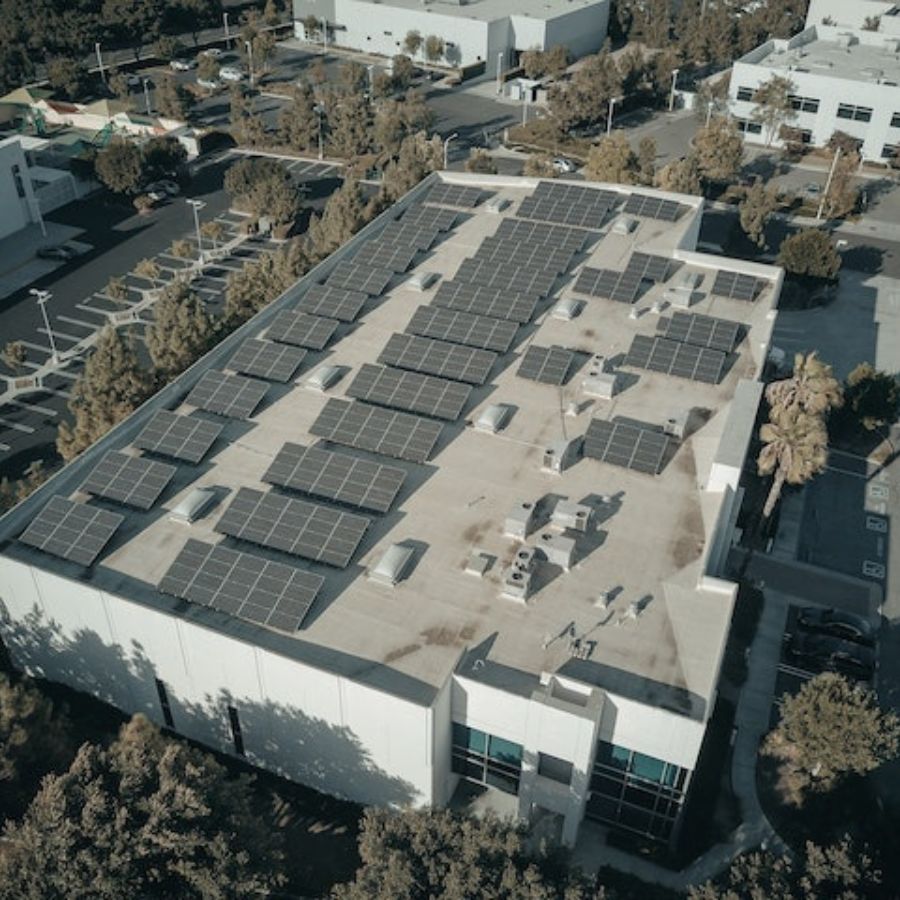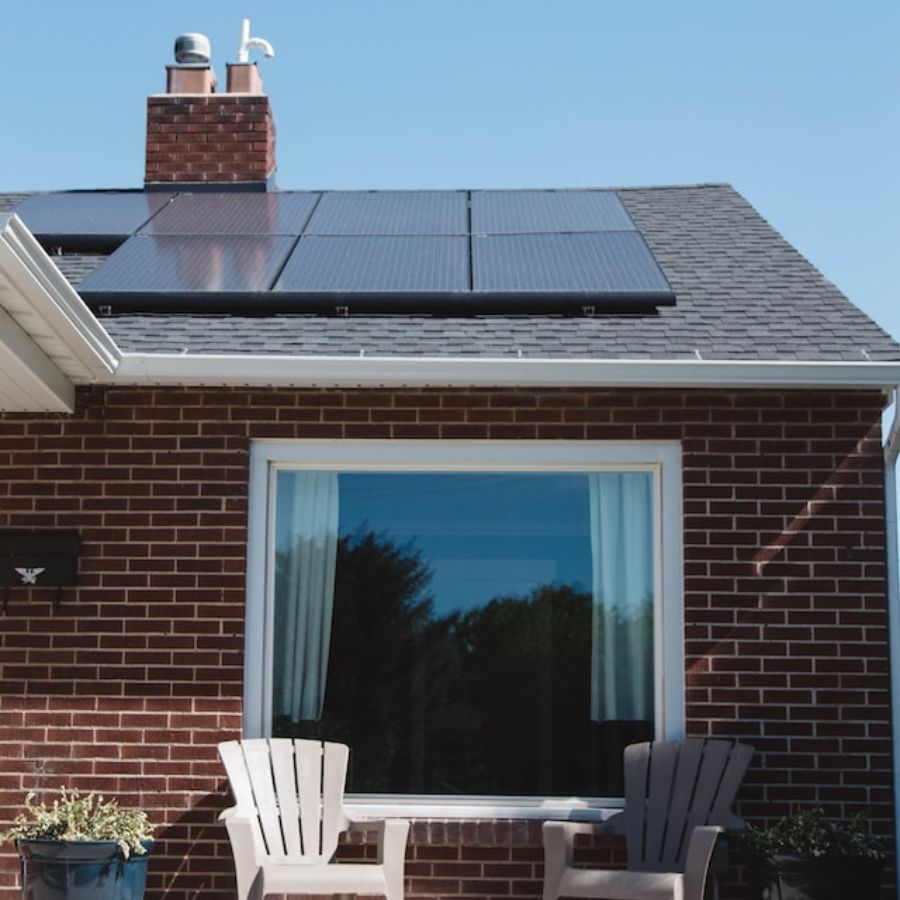Solar energy has emerged as a crucial and sustainable power source in BC in an era of increasing environmental awareness. Harnessing the sun’s abundant energy, solar panels have become a symbol of clean and renewable power generation. However, with the rising popularity of solar power, questions, and concerns are inevitable.
As more people express interest in installing solar panels, one common question is, “How many solar panels do you need for a 10kW solar system?” The answer depends on various factors, including the wattage and efficiency of the panels, solar irradiation in the location, available roof space, and any potential shading or obstructions.
The 10kW solar system is a versatile and popular option among the different sizes of solar systems available.
A 10kW solar system can generate approximately 10 kilowatts of power from sunlight, providing ample energy to meet the needs of residential and commercial properties.
Due to its moderate size, it strikes a balance between power generation capacity and space requirements. As a result, many individuals and businesses find the 10kW solar system an ideal choice, as it significantly reduces electricity bills while minimizing the need for ample roof space or land for installation.
In the following sections, we will delve deeper into these factors and explore the considerations in determining the number of solar panels required for 10kW solar systems.
What Is a 10kW Solar System?

A 10kW solar system is a solar energy system capable of producing approximately 10 kilowatts of power from sunlight.
It consists of various components working together to convert solar energy into usable electricity and save on energy bills.
This system size is often for residential and small to medium-sized commercial installations due to its capacity to generate substantial clean energy.
Factors Influencing the Number of Panels
Several factors are crucial in determining how many solar panels are necessary for a 10kW solar system.
Panel Efficiency
The efficiency of solar cells refers to their ability to convert sunlight into electricity. Higher efficiency panels generate more electricity per unit area and may require fewer panels to achieve the desired power output.
However, higher-efficiency panels often come at a higher cost.
Solar Irradiation
The amount of solar power available in a particular location, known as solar irradiation, affects the energy production of a solar system.
Regions with higher solar irradiation tend to generate more electricity from solar panels, requiring fewer panels to achieve the desired output.
Geographic Location
The geographical location of a solar system influences the solar irradiation it receives. For example, areas closer to the equator generally receive more sunlight yearly, leading to higher energy production potential.
In contrast, regions farther from the equator may require additional solar panels to compensate for lower solar irradiation.
Available Space
The available roof space or land area for installing solar panels impacts the number of panels one can accommodate.
Limited space may require higher efficiency panels or alternative installation options, such as ground-mounted systems.
Shading and Obstructions
Shading from nearby trees, buildings, or other obstructions can significantly reduce the energy production of solar panels. Therefore, it is crucial to assess and minimize shading effects to maximize the efficiency of the solar panel array.
One should also consider obstructions when determining the number of panels required.
Considering these factors, a solar energy system provider or installer can assess the specific requirements of a 10kW solar system and determine how many solar panels will be needed to achieve the desired energy production.
The Calculation Methodology for Solar Panels Requirements
It is essential to consider the average panel wattage to calculate the number of solar panels needed for a 10kW solar system. It is because the wattage of solar panels indicates their power-generating capacity.
We can estimate the required panels by dividing the total system capacity (10kW) by the average panel wattage. For example, if the average panel wattage is 300W, the calculation would be 10,000W ÷ 300W = 33.33 panels.
Since panels are typically sold in whole numbers, we would round up to 34 panels for this example.
Accounting for System Losses
Solar systems experience various losses that reduce their overall efficiency and how much electricity they can generate. These losses include module mismatch, temperature coefficient losses, and inverter efficiency.
It is crucial to account for these losses when determining the number of panels needed. Typically, 10-20% is added to the required panel count to compensate for these losses.
In our example, if we add a 15% loss factor, we would calculate 34 panels ÷ (1 – 0.15) = 40 panels (rounded up to the nearest whole number).
Calculating Daily Energy Production
The daily energy production of a solar system depends on the solar irradiation received, panel efficiency, and system losses. Solar irradiation data are specific to the location. Therefore, you can obtain it from reliable sources.
To calculate the daily energy production, multiply the total panel capacity (kW) by the average daily solar irradiation (kWh/m²). For example, if the average daily solar irradiation is 5 kWh/m² and the system capacity is 10kW, the calculation would be 10kW × 5 kWh/m² = 50 kWh of energy production per day.
Estimating Annual Energy Production
To estimate the annual energy production of a solar system, multiply the daily energy production (in kWh) by the number of days in a year.
Keep in mind that solar irradiation may vary throughout the year. For a rough estimation, assuming 365 days a year, the annual energy production would be 50 kWh/day × 365 days = 18,250 kWh per year.
These calculations provide a baseline estimation of the number of panels required for a 10kW solar system. However, it’s crucial to consult with a professional solar system provider or installer who can assess how much energy and electricity one can get.
They will also consider panel efficiency, shading, and local solar irradiation data. As a result, they can provide a more accurate calculation and design a solar panel array that maximizes energy production within the available roof space or land area.
Case Studies to Calculate the Number of Solar Panels
Case Study 1 – Residential Rooftop Installation
Let’s consider a case study where a residential rooftop installation aims to achieve a 10kW solar panel system. The available roof space allows for 20 monocrystalline solar panels with an average panel wattage of 500W. Considering a system loss factor of 15%, we can calculate the adjusted panel count as follows:
Total panel capacity needed = 10kW ÷ (1 – 0.15) = 11.76kW (rounded up to 12kW)
Number of panels needed for 1okW solar technology= 12,000W ÷ 500W = 24 panels
In this case, 24 solar panels with an average wattage of 500W each would be required to achieve the desired 10kW solar panel system. The panel layout can optimize sunlight exposure and minimize shading effects, maximizing solar power production from the available roof space.
Case Study 2 – Commercial Installation
Large-scale system considerations come into play in a commercial installation of a 10kW solar panel system.
Commercial installations often have more space than residential rooftops, allowing for greater flexibility in the design and layout of the solar panel system.
When designing a large-scale system, factors such as the size and orientation of the available space, the specific energy needs of the commercial establishment, and any local regulations or building codes need to be considered.
A thorough site assessment is crucial to determine the optimal panel count and configuration.
A detailed analysis is required to determine the panel count for optimal energy production in a commercial installation.
This analysis considers solar irradiation, panel efficiency, system losses, available space, and potential shading or obstructions.
When working with a solar system provider or installer, a commercial installation would comprehensively evaluate these factors to determine the number of solar panels needed. The goal is to achieve the desired 10kW solar panel system while maximizing solar electricity production and ensuring compliance with local regulations.
A commercial installation can achieve the desired energy production with fewer solar panels than lower efficiency or poorly designed systems by utilizing efficient panels and optimizing the panel layout to minimize shading.
Additionally, exploring available incentives and policies that can significantly reduce the upfront cost is crucial when considering the financial aspects of solar panel installations. For instance, in Canada, the federal solar tax credit allows homeowners and businesses to claim a percentage of the solar panel system’s worth as a tax credit, making the investment more affordable.
Bottom Line
In conclusion, installing a 10kW solar system offers a reliable and sustainable solution to meet the growing demand for clean energy. However, as this article outlines, understanding the basics of a 10kW solar system, including its capacity and components, is crucial for making informed decisions. In addition, one must consider factors such as panel efficiency, solar irradiation, geographic location, available space, and shading when determining the number of solar panels needed.
By following the calculation methodology discussed, one can estimate the panel requirements and evaluate the daily and annual energy production of a 10kW solar system. Case studies and examples have showcased the importance of tailored assessments for residential and commercial installations, highlighting the need for professional expertise to design efficient solar panel arrays.
While a 10kW solar system has the potential to generate significant electricity and reduce energy bills, the specific outcomes depend on individual energy consumption, sunlight availability, and other factors. Therefore, consulting with solar system professionals to assess energy needs and accurately tailor the system is essential.
In essence, harnessing the power of solar technology through a 10kW solar system offers numerous benefits, including reduced reliance on conventional energy sources, lower carbon footprint, and potential energy cost savings. Furthermore, as renewable energy continues to gain popularity, investing in a well-designed and adequately sized solar panel system can contribute to a greener future while providing sustainable and reliable electricity for residential and commercial applications.
Frequently Asked Questions
How Much Power Will a 10KW Solar System Produce?
A 10kW solar system can produce approximately 10,000 watts of power from sunlight. However, the actual energy production of a 10kW solar system depends on various factors such as solar irradiation, panel efficiency, system losses, energy consumption, and geographic location.
On average, a well-designed and adequately functioning 10kW solar system can generate around 30-40 kilowatt-hours (kWh) of electricity daily. However, this can vary throughout the year due to seasonal changes in sunlight availability.
Will 10KW Power a House?
Whether a 10kW solar system can power a house depends on the specific energy consumption of the house. On average, a 10kW solar design can meet the electricity needs of a medium-sized home. First, however, it is vital to consider the energy consumption patterns of the household and the availability of sunlight in the area.
A thorough assessment of the household’s energy consumption, including appliances, lighting, heating, cooling, and other electrical needs, is necessary to determine if a 10kW solar system can fully cover the energy demands. In some cases, additional energy sources or storage solutions may be essential to consistently meet the household’s energy needs.



Leave a Reply